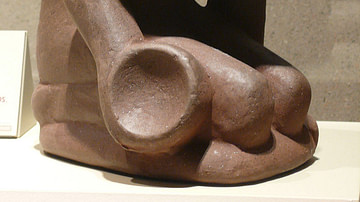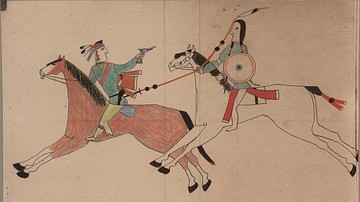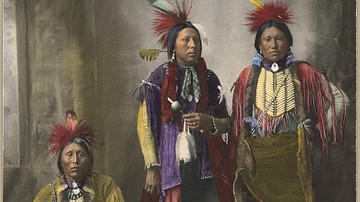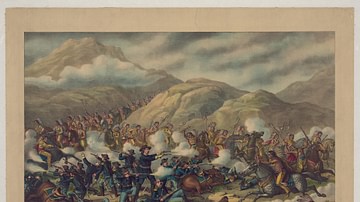Search
Remove Ads
Advertisement
Summary 
Loading AI-generated summary based on World History Encyclopedia articles ...
Search Results

Video
How writing got civilized - History of Writing Systems #3 (Logographs)
Watch prehistoric pictures turn into written words as ancient civilizations around the world learn to write for the very first time! You took Thoth's Pill. Now your journey continues. Leave the cave days behind and take a leap into history...

Interview
Interview: Rome Strategy of Empire by James Lacey
In this interview, World History Encyclopedia sits down with author James Lacey to chat about his new book Rome: Strategy of Empire published by Oxford University Press. Kelly: Can you tell us a little bit about your background? James...

Article
Coyote Tales of the Comanche
Coyote tales of the Comanche feature the same trickster figure as the Coyote tales of the Shasta nation, the Coyote tales of the Apache, and those of many other Native peoples of North America. Coyote, the most famous trickster figure of...

Article
Coyote Tales of the Apache
Coyote is easily the most famous trickster figure in the lore of the Native peoples of North America, and the Coyote tales of the Apache are among the best-known. As a trickster figure, Coyote appears alternately as a hero, villain, wise...

Article
The Girl Who Was the Ring
The Girl Who Was the Ring is a Pawnee legend committed to writing by the anthropologist George Bird Grinnell (l. 1849-1938) in his work The Punishment of the Stingy and Other Indian Stories (1901). The story highlights the Native American...

Article
The Prophecy of Bear Man
The Prophecy of Bear Man is a war story from the Cheyenne nation relating their response to a Pawnee horse-raiding party and how they defeated their enemy, regaining most of the horses taken. The story exemplifies Native American warfare...

Interview
Interview with Michael Levy
Join World History Encyclopedia as they talk to Michael Levy, a prolific composer of the ancient lyre all about his inspiration and knowledge of the instrument. If you want to hear Michael perform, be sure to check out our video interview...

Article
Saynday Tales
Saynday tales are popular legends of the Kiowa nation featuring the trickster figure Saynday who, like other Native American tricksters, sometimes appears as a hero, sometimes as a villain, and other times as a clownish buffoon. Two of the...

Article
Black Elk on the Battle of the Little Bighorn
Black Elk (l. 1863-1950) of the Oglala Lakota Sioux was twelve years old at the Battle of the Little Bighorn on 25 June 1876. He gives his account of the famous conflict in the work Black Elk Speaks (1932), and, even at a distance from the...

Article
The Boy Who Saw A-ti'us
The Boy Who Saw A-ti'us is a legend of the Pawnee nation about a young man who is granted a vision of the Creator Ti-ra'wa A-ti'us (also known simply as Ti-ra'wa or as A-ti'us) and, through his faith, is able to see what others cannot and...